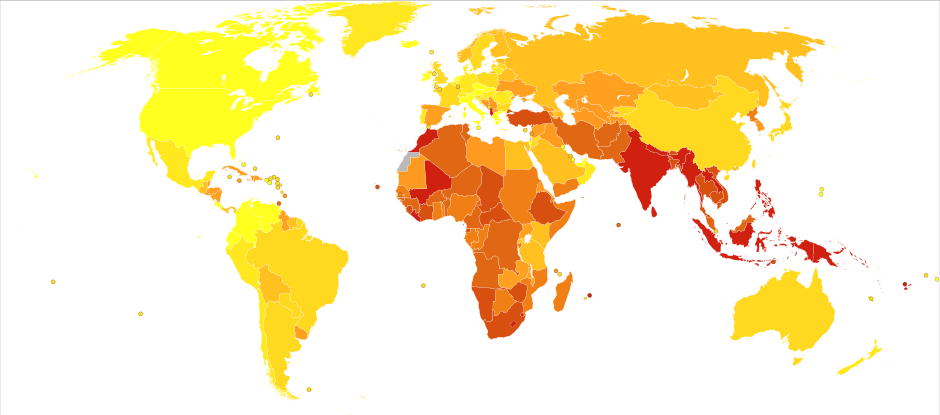
Asthma is a chronic disease that affects more than 235 million people worldwide. World Asthma Day was organized to address this public health issue, and to increase knowledge of the disease across the globe. Asthma causes one’s airways to become inflamed and produce extra mucus, which can result in various symptoms such as difficulty breathing, wheezing, and coughing. These symptoms may emerge after being triggered by factors that cause more swelling in the airways. Some more common triggers include allergies, smoking, air pollution, dust mites, and physical exercise.
The severity and cause of symptoms differs from person to person, so it’s crucial that patients are mindful of their particular condition. There is no cure for asthma, but with proper knowledge and treatment, it can be well managed. However, according to WHO, approximately 383,000 people worldwide died due to asthma complications in 2015. This year on World Asthma Day, we want to highlight some recent research about the disease and its triggers to promote appropriate management. There have been various studies published in BMC Pulmonary Medicine this year that investigate several aspects of the disease.
![By United States National Institute of Health: Heart, Lung and Blood Institute [Public domain], via Wikimedia Commons](https://blogs.biomedcentral.com/bmcseriesblog/wp-content/uploads/sites/9/2017/05/asthma-300x258.png)
Lawson et al. recently published a study that aimed to better understand how living in urban versus rural areas affects asthma in children. In order to do this, they studied children living in varying population densities, from large urban centers to small, rural towns. They found that while asthma prevalence among children tended to be lower in rural areas, the symptoms were more severe. The reason for this is not entirely clear, but it could be due to certain environmental triggers or differences in disease management.
Asthma symptoms in the workplace
Some conditions encountered in the workplace can also trigger asthma symptoms. These are referred to as occupational exposures. Another study published in BMC Pulmonary Medicine sought to explore the association between certain occupational exposures and asthma exacerbation. Overall, Kim et al found that the following conditions were associated with increased risk of asthma exacerbation: exposure to gas, smoke, and dust, cold temperatures, strenuous activity, and damp and moldy environments. Dampness and mold, as well as strenuous activity, specifically were associated with severe asthma exacerbation. It is important for asthmatic patients to be aware of the risks these conditions pose, and should avoid them whenever possible.
Sleep disorders and asthma
Sleep disorders, such as sleep apnea, have also been shown to negatively affect asthma symptoms. These conditions reduce airflow to the lungs which increases acid reflux and inflammation, which may ultimately worsen asthma symptoms. In a recent research article, Han et al studied the effects of sleeping disorders on asthma symptoms in South Korea. Sleep disorders have become increasingly common in South Korea, and asthma here is relatively not well managed. The study found that sleep disorders in patients previously diagnosed with asthma tend to worsen symptoms and increase risk of mortality. This reveals the importance of finding a proper course of treatment and being aware of the added risks of sleeping disorders.

Raising awareness
While asthma is a major public health issue — and the most common noncommunicable disease among children — it can be controlled to live a good quality of life. One major concern is that it is under-diagnosed and under-treated. This is of particular concern in low and lower-middle income nations, where asthma-related death rates are the highest. By raising awareness on World Asthma Day, people around the world hope to address this issue to ensure asthmatic patients can properly identify and treat their symptoms. This way we can lessen the burden on not only patients, but also those close to them. If you are interested in learning more about this disease, we encourage you to visit the BMC Pulmonary Medicine website for more related papers.
Well written article! I think good management by the individual is the key… Finding out what triggers asthma in each person seems to be a good start. It does not surprise me at all that the rates of asthma are lower in rural areas.